I have a dataframe df that loads data from a database. Most of the columns are json strings while some are even list of jsons. For example:
id name columnA columnB
1 John {"dist": "600", "time": "0:12.10"} [{"pos": "1st", "value": "500"},{"pos": "2nd", "value": "300"},{"pos": "3rd", "value": "200"}, {"pos": "total", "value": "1000"}]
2 Mike {"dist": "600"} [{"pos": "1st", "value": "500"},{"pos": "2nd", "value": "300"},{"pos": "total", "value": "800"}]
...
As you can see, not all the rows have the same number of elements in the json strings for a column.
What I need to do is keep the normal columns like id and name as it is and flatten the json columns like so:
id name columnA.dist columnA.time columnB.pos.1st columnB.pos.2nd columnB.pos.3rd columnB.pos.total
1 John 600 0:12.10 500 300 200 1000
2 Mark 600 NaN 500 300 Nan 800
I have tried using json_normalize like so:
from pandas.io.json import json_normalize
json_normalize(df)
But there seems to be some problems with keyerror. What is the correct way of doing this?

